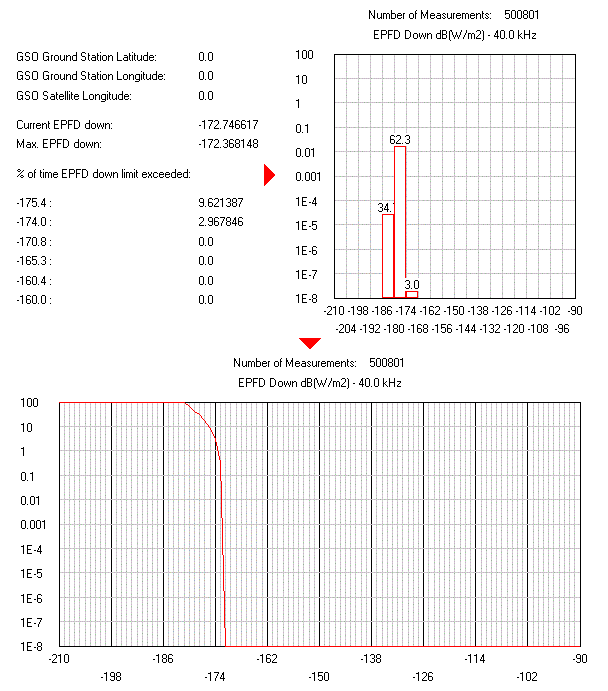EPFD and Interference Analysis
The Equivalent Power Flux Density (EPFD) Analysis option allows you to determine the power levels produced by non-GSO fixed-satellite service (FSS) systems and use these results for examining non-GSO system compliance with the limits specified in Article 22 of the Radio Regulations.
The current version allows you to consider the "EPFD(down)" interference case in which the interference from the non-GSO satellites into a GSO ground station is evaluated. The analysis includes evaluating the EPFD level at a GSO ground station on a time step by time step basis using the equation specified in 22.5C.1 of the Radio Regulations.
The program allows you to specify the Minimum GSO Separation Angle Constraint, the GSO satellite, and the ground station location. You can choose between ITU-R S.672-4.1, ITU-R S.1528.2, and ITU-R S.1528.3 radiation patterns or input a measured non-GSO satellite antenna radiation pattern. The radiation pattern of the GSO ground station antenna can be defined using ITU-R S.1428-1, RR 22.5C.12, and ITU-R S.1443-3 recommendations.
Additional parameters, such as the non-GSO satellite off-axis angle adjustment, non-GSO satellite EPFD multiplier, maximum number of contributing non-GSO satellites, and the possibility of choosing either top or bottom contributors, have been introduced to support the modeling of certain steerable and multibeam systems and interference mitigation strategies.
The program offers both fine time step and dual time step modes, ensuring the simulation accurately captures short-term interference scenarios while providing high performance.
Users can switch between a textual report, distributional histogram, and cumulative histogram at any time during the simulation:

Using the Periodic Coverage Analysis module, you can specify the system of GSO satellites and multiple GSO ground stations and then conduct simultaneous EPFD Down analysis for multiple "GSO ground station - GSO satellite" pairs. For each pair, the program determines the maximum aggregate EPFD Down value, the time when such maximum value occurred (the WCG Time), and the percent of the time when each of the EPFD Down limits was not exceeded.
